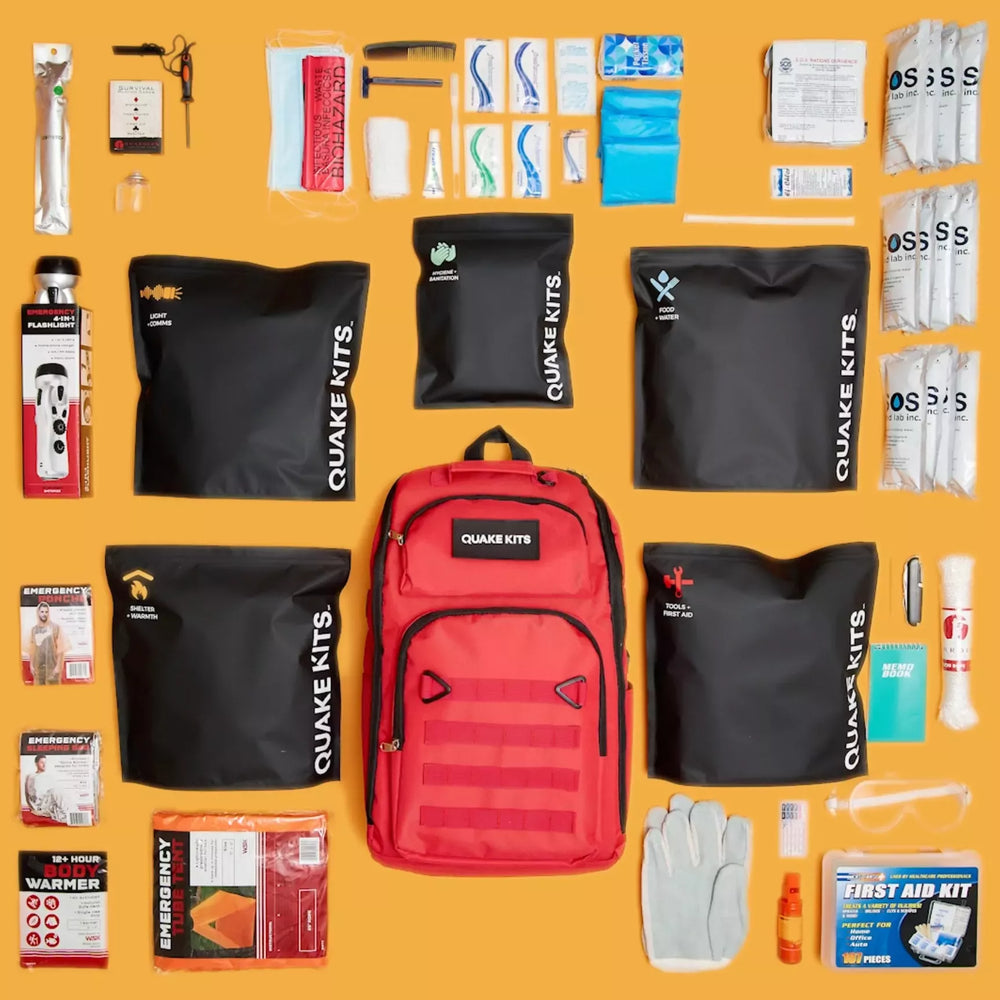Winter Weather Tips
How to Protect Yourself from Winter Weather
This week's Disaster Preparedness Tips is very timely as a good portion of the country has been hit with severe and damaging storms this year. And we are not out of the woods if you follow and trust Punxsutawney Phil and his prediction of six more weeks of significant winter weather.
Winter storms increase the risk of car accidents and hypothermia. Blizzards and other winter storms can bring snow, wind, and extreme cold. Being prepared for this type of situation is crucial. Some storms can be planned for but some can come unexpectedly, out of nowhere.
It is always a good idea to keep an eye on the weather patterns during the winter, especially when you have travel plans or plan to be out in nature for a period of time. Proper clothing, emergency supplies and food & water are a must to ensure your family's safety and health.
Please enjoy this valuable information and suggestion list of what you should know and do to prepare for significant winter weather.
Winter storms increase the risk of car accidents and hypothermia. Blizzards and other winter storms can bring snow, wind, and extreme cold. Being prepared for this type of situation is crucial. Some storms can be planned for but some can come unexpectedly, out of nowhere.
A winter storm could:
- Last for a few hours, or several days.
- Disable heat, power, and communications services.
- Older adults, children, and sick people are at greater risk than pets.
Winter Storm Warning
When hazardous winter weather such as heavy snow, heavy freezing rain or heavy sleet is expected or already occurring. Winter Storm Warnings are typically issued between 12 and 24 hours before the event is likely to start.
Winter Storm Watch
Notifies the public about the possibility of heavy snow, heavy freezing rain or blizzards. Winter Storm Watches can be issued between 12 and 48 hours prior to the onset of a Winter Storm.
Winter Weather Advisory
For accumulations of snow, freezing rain or freezing drizzle and sleet. This can cause serious inconveniences and could even lead to life-threatening situations.
Know Your Risks in Winter Storms
Pay attention to warnings and weather reports about freezing weather and winter storms. Listen out for alerts and emergency information. Register for the warning system in your area. You can also get emergency alerts from the Emergency Alert System (EAS), National Oceanic and Atmospheric Administrations (NOAA) Weather Radio.
Preparing for Winter Weather
Insulation, weather stripping and caulking can make your home more resistant to the cold. How to prevent pipes freezing Test smoke alarms and carbon monoxide detectors using battery backups. You will need supplies in the event that you are unable to get power for several days. Remember to consider the individual needs of each person, including their medication. Keep in mind the needs of your pets. Extra batteries are needed for flashlights and radios. For help if you cannot afford heating, weatherization, or other energy-related repairs, please contact the Low income Home Energy Assistance Program (LIHEAP).
In Case of Emergency
Prepare for winter weather at your home, work and in the car. Make sure you have an emergency kit in your car. Jumper cables, sand and warm clothing are all good options. A full tank of gas is recommended.
Stay Safe in Winter Weather
Avoid carbon monoxide poisoning. Generators and grills should be used outdoors, away from windows. Never heat your home using a gas stovetop, oven, or other heating device.
- If possible, stay off the roads. If you are trapped in your car, stay inside.
- You should limit your time spent outside. Layers of warm clothing are recommended for those who must go outdoors. Pay attention to signs of hypothermia and frostbite.
- Avoid overexerting yourself when shoveling snow or walking on the snow to reduce your risk of having a heart attack.
Learn About Hypothermia and Frostbite
Frostbite causes loss of sensation and color around the eyes, fingers, and toes.
- Signs: Numbness, grayish-yellow or white skin, firm skin or waxy skin.
- Actions: Get into a warm place. Warm water is best. Warm your body with heat. Use a heating pad or massage your body.
Hypothermia is a low body temperature. An emergency is a temperature below 95 degrees.
- Signs: Shivering and exhaustion, confusion or fumbling hands, memory loss, slurred speech, drowsiness, or memory loss.
- Actions - Go to a warm place. The center of your body should be warmed first: the chest, neck, head, and groin. Wrap your head and neck in warm blankets to keep dry.






Leave a comment